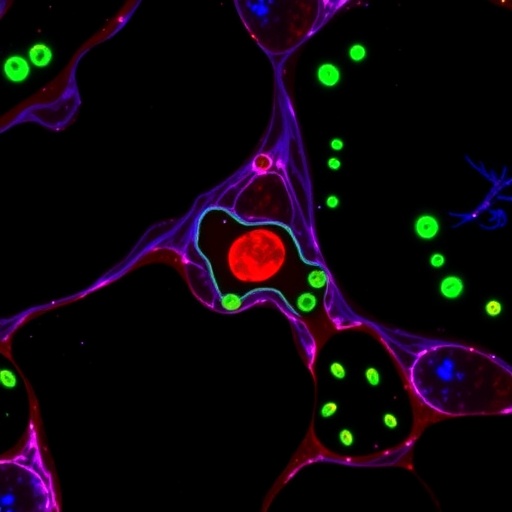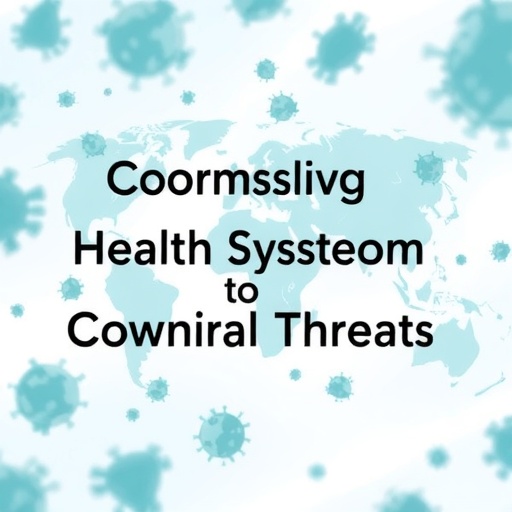
Recent research has illuminated a fascinating connection between household physical activity and the beneficial enlargement of gray matter volume in older adults. As the world grapples with an aging population, the quest for effective strategies to enhance brain health has never been more critical. The study, led by Koblinsky et al. and published in BMC Geriatrics, provides a compelling case for integrating higher levels of physical activity into daily routines, particularly for older individuals seeking to preserve cognitive function as they age.
Gray matter, a crucial component of the brain’s anatomy, plays a pivotal role in processing information, coordinating movement, and supporting various cognitive tasks. As people age, a natural decline in gray matter volume can lead to detrimental effects on mental acuity and overall brain health. This research underscores the importance of engaging in regular physical activity to potentially mitigate these age-related declines effectively.
Koblinsky and colleagues meticulously studied a group of older adults, assessing their patterns of household physical activity alongside advanced neuroimaging techniques to accurately gauge gray matter volume. The results were striking. Participants who reported engaging in higher levels of everyday physical activity exhibited significant increases in gray matter volume when compared to their less active counterparts. This correlation hints at the critical influence that movement and physical engagement have on the brain’s structural integrity.
The findings of this study may revolutionize how we approach aging and cognitive health. While previous research has established a connection between physical activity and generalized health benefits, Koblinsky’s work brings into focus the specific mechanisms at play regarding brain structure. Older adults are often encouraged to remain active for cardiovascular and muscular health, but this study emphasizes the profound neurological ramifications of incorporating more movement into daily life.
Revisiting the aging process, it’s essential to examine the factors contributing to neurological decline. Notably, sedentary lifestyles have become more prevalent in modern society, posing significant risks for older adults. With a wealth of evidence suggesting that even light physical activity, such as household chores, can contribute to improvements in brain health, the implications of Koblinsky’s findings are both timely and urgent.
In exploring household physical activities specifically, the research highlights types of movement that are universally accessible. Activities such as cleaning, gardening, and light home repairs not only serve practical purposes but also provide the essential physical engagement required to foster better brain health. This approach offers a practical avenue for increasing physical activity without necessitating the adoption of potentially daunting exercise regimens.
The neurobiological mechanisms that could explain the positive relationship between physical activity and gray matter volume are varied and complex. Physical activity is known to stimulate the circulation of blood throughout the body, including the brain, which may enhance nutrient delivery and support cellular growth. Moreover, engaging in consistent physical movement has been associated with the release of neurotrophic factors, proteins that aid in the healing, growth, and survival of neurons. Thus, while the benefits of physical activity are now clearer, the underlying biological processes are worth further exploration.
Beyond the physiological advantages, the study also hints at the broader benefits of heightened physical activity, including the enhancement of overall well-being, quality of life, and mood stability in older adults. Exercise and movement are powerful modulators of mood, often reducing feelings of anxiety and depression, which can further exacerbate cognitive decline. Thus, fostering an environment that encourages movement can lead to a more holistic improvement in the lives of older individuals.
Given these findings, community and public health initiatives may want to incorporate strategies that promote household physical activity amongst older adults. These strategies could range from social programs that combine light exercise with social interaction, to developing resources that assist older adults in safely engaging in physical activities within their homes. By adopting a multi-faceted approach that encompasses health and social metrics, we could lay the groundwork for healthier aging populations.
As modern societies increasingly focus on healthcare solutions, the revelations from Koblinsky’s study serve as a critical reminder of the profound effects of lifestyle choices. In a world where individuals often feel overwhelmed by the pressures of daily life, the encouragement to engage in simple household activities may provide an accessible solution that enriches the physical, mental, and social health dimensions of aging.
In conclusion, the correlation drawn from Koblinsky et al.’s research holds significant promise for advancing our understanding of healthy aging and cognitive preservation. As the population of older adults continues to grow, implementing straightforward, actionable strategies derived from these insights could lead to enhanced mental health, resilience, and quality of life. The scientific community must now consider how best to apply these findings in real-world settings, ensuring that older adults reap the benefits of sustained physical engagement in their everyday lives, ultimately cultivating a healthier society.
In a world that constantly adapts to new paradigms of health, the convergence of physical activity and cognitive health represents a crucial frontier for future research and public health advocacy. Through a collective commitment to promoting accessible physical activities, we may very well support an enriched quality of life for aging individuals, unlocking the potential for sustained cognitive vitality.
Subject of Research: The relationship between household physical activity and gray matter volume in older adults.
Article Title: Household physical activity is positively associated with gray matter volume in older adults.
Article References:
Koblinsky, N.D., Meusel, LA.C., Greenwood, C.E. et al. Household physical activity is positively associated with gray matter volume in older adults.
BMC Geriatr 21, 104 (2021). https://doi.org/10.1186/s12877-021-02054-8
Image Credits: AI Generated
DOI:
Keywords: Grey matter volume, older adults, physical activity, cognitive health, neuroimaging, aging, public health.
Tags: aging population strategiesbenefits of exercise for seniorsbrain health in older adultscognitive function preservationenhancing brain health through activityeveryday physical activity effectsgray matter volume in seniorshousehold physical activityKoblinsky research studymental acuity and agingneuroimaging techniques in geriatricsphysical activity and cognitive decline




